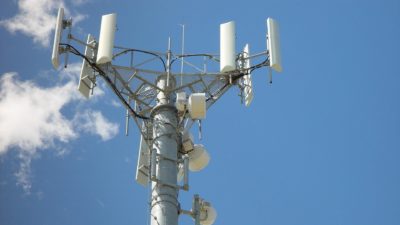
28 October 2018
Millimetre waves (MMWs) correspond to the range of 30 – 300 GHz of the electromagnetic spectrum and are currently used for a variety of military and civilian applications.
The coming 5G communications network will be a millimetre wave platform and as it is being rolled out in parts of the United States, the 5G is operating at between 28 GHz and 39 GHz.
From the study below we are informed that millimetre wave operating at 35 GHz indicate both environmental heat and 35GHz millimetre wave exposure elicit the release of macrophage-activating mediators into the plasma of rats.
In summary, the current study suggests that plasma from EH-or 35 GHz MMW-exposed rats can induce changes in protein expression and 3-NT in a rat alveolar macrophage cell line. Thus, in our animal model [Millenbaugh et al., 2008], exposure to either EH or MMWs may cause release of active mediators into the systemic circulation. The data presented here are in line with prior reports of MMW-induced effects in rodents that indicate involvement of secondary molecular signals in downstream immune responses such as increased production of cytokines by macrophages, natural killer cells, and T cells [Makar et al., 2003, 2005, 2006], neutrophil recruitment to skin vessels [Millen- baugh et al., 2008], and increases in oxidative stress in peripheral leukocytes [Kalns et al., 2000].
35ghz millimetre waves
In today’s world, 2.45-GHz radio-frequency radiation (RFR) from industrial, scientific, medical, military and domestic applications is the main part of indoor-outdoor electromagnetic field exposure. Long-term effects of 2.45-GHz Wi-Fi radiation on male reproductive system was not known completely. Therefore, this study aimed to investigate the major cause of male infertility during short- and long-term exposure of Wi-Fi radiation.
Materials and Methods
This is an animal experimental study, which was conducted in the Department of Anatomical Sciences, Faculty of Medicine, Zanjan University of Medical Sciences, Zanjan, IRAN, from June to August 2014. Three-month-old male Wistar rats (n=27) were exposed to the 2.45 GHz radiation in a chamber with two Wi-Fi antennas on opposite walls. Animals were divided into the three following groups: I. control group (n=9) including healthy animals without any exposure to the antenna, II. 1-hour group (n=9) exposed to the 2.45 GHz Wi-Fi radiation for 1 hour per day during two months and III.7-hour group (n=9) exposed to the 2.45 GHz Wi-Fi radiation for 7 hours per day during 2 months. Sperm parameters, caspase-3 concentrations, histomorphometric changes of testis in addition to the apoptotic indexes were evaluated in the exposed and control animals.
Results
Both 1-hour and 7-hour groups showed a decrease in sperm parameters in a time dependent pattern. In parallel, the number of apoptosis-positive cells and caspase-3 activity increased in the seminiferous tubules of exposed rats. The seminal vesicle weight reduced significantly in both1-hour or 7-hour groups in comparison to the control group.
Conclusion
Regarding to the progressive privilege of 2.45 GHz wireless networks in our environment, we concluded that there should be a major concern regarding the timedependent exposure of whole-body to the higher frequencies of Wi-Fi networks existing in the vicinity of our living places.
Full Study
As Pdf
Further Study
Success in Australia against the rollout of 5G
Cancer cell death induced by nanomagnetolectin
Modern Warfare Strategy Against The Populations Coordinated By The Bilderberg Steering Committee
How Electromagnetic Fields (EMFs) Effect Biology Via Voltage-Gated Calcium Channels (VGCC) Activation
The Lilly Wave And Psychotronic Warfare